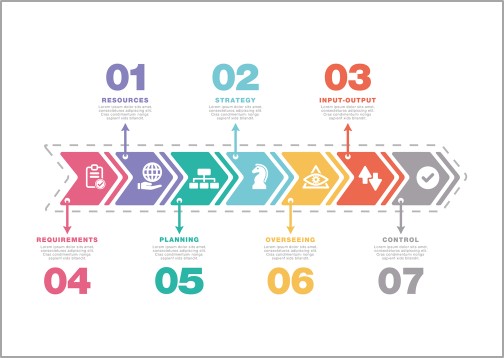
In Project Management class, they teach you to make assumptions about your project, identify risks, come up with contingency plans and prepare to have those change request forms handy in your back pocket in case anything should happen. You are on the hook for the knowns, the unknowns and the known unknowns. Anticipating risks and making assumptions while managing timelines, driving execution, and overseeing the mechanics of a project is a juggling act that all project managers need to master. However, it’s easy for project managers to lean on the common misconception of “what worked for one project can (and should) work for another” and fail to adequately prepare themselves and their project team to the current situation at hand. Learning to unlearn this practice and avoid these five common mistakes will save you time, money and many unanticipated facepalms.

People read the brief: Make no assumption that people read the creative brief, requirements doc or project charter prior to kicking off a project. Just because you send it out along with a meeting invite or in a separate email doesn’t mean your project team and stakeholders are eagerly gleaning the project doc the moment it hits their inbox. Be mindful that while the brief and the charter may be your first priority as the project owner, it may be your team’s second or third priority. Take the time to go through each section thoroughly in your kickoff meeting and assume they are seeing it for the first time. In doing so, you’ll save yourself from that head tilt and irking sense of wonder of whether or not the team has read your brief.
Everyone knows their roles: You’d be surprised to know that even with fancy titles and departments appended to their name or email signature, many people on your project team and stakeholder list don’t know their role or function on your project. Having a RACI chart, and going through roles and responsibilities may seem mundane and inconsequential, but it’s very much necessary for your project team to succeed and stay on point. Lines get crossed, team members get short circuited and fingers get pointed. Relieve yourself from unnecessary levels of stress by doing yourself and the team this favor by properly defining the roles and responsibilities they’ll play in the duration of your project.
Your baby is their baby: Project managers assume that Nobody puts (their) Baby in the corner, but in this day and age, people do and oftentimes, you, as the project manager, hear about this at the ninth hour. Knowing your team’s capacity and understanding their technological capabilities and subject matter expertise will help you navigate through the tailwinds and better support their needs. Set clear expectations of what gets accomplished in and out of meetings. I personally like the 80/20 rule where 80 percent of the work is done outside of the meeting while 20 percent is left for planning, decision-making and determining next steps. Outside of planning meetings and status meetings, set up working sessions for those who might find it valuable to just block out that time and get work done. Making it a priority to meet your project team where they are in their career journey will likely have them keep your project top of mind and make room for it in their busy schedules.
Project managers assume that Nobody puts (their) Baby in the corner, but in this day and age, people do and oftentimes, you, as the project manager, hear about this at the ninth hour.
Operating on autopilot: Just because you successfully kicked off your project with the team and gave them all the paperwork doesn’t mean you can sit back and let your team operate on autopilot. As a project manager, you are responsible for setting the pace and tone for the project, and that means keeping tasks afloat and working with them to achieve their milestones. You are responsible for opening up the lines of communications between the customers, stakeholders and third parties, and making sure they are fulfilling their targets and goals. You become a servant leader by ensuring each team member has what they need to be successful and get the job done. As a project manager, if you think you can sit back, relax and kick up your feet while the project is in motion, then you are in the wrong field and should find the nearest exit.
Just because you successfully kicked off your project with the team and gave them all the paperwork doesn’t mean you can sit back and let your team operate on autopilot.
Falling prey to the “wash, rinse and repeat” cycle: As indicated earlier, diving head first into a project and making the assumption of “what worked for one project can work for another” is a classic offense for the listless project manager. While there are certainly common practices and proven methodologies that have a high probability of reaching a successful outcome, project managers need to treat their own projects as the unique and temporary endeavors that they rightfully and knowingly are. No project will have the exact same rhythm and flow, and this makes project management a desirable profession for those with an insatiable appetite to get creative, solve problems and lead by example.
No project will have the exact same rhythm and flow, and this makes project management a desirable profession for those with an insatiable appetite to get creative, solve problems and lead by example. Click To TweetIn times where the demand for project management talent outweighs the supply, project managers need to be on top of their game and avoid common mistakes such as these that can cause setbacks to their project, team and bottom line. Many of these mistakes are indeed common and fly under the radar both knowingly and unknowingly. Making a concerted effort to address these challenges as part of your project planning process will help prevent unsightly consequences that can adversely affect your project’s outcome.






Follow Me